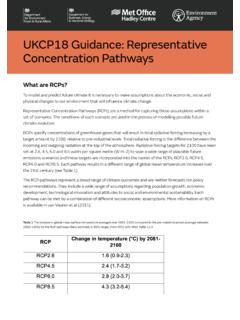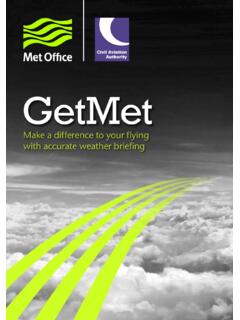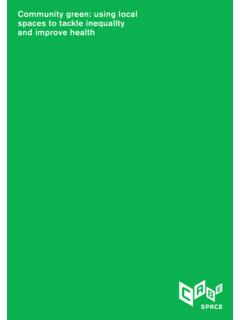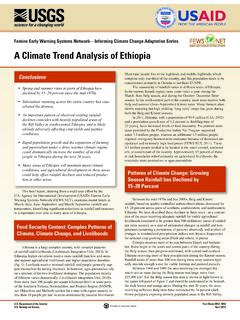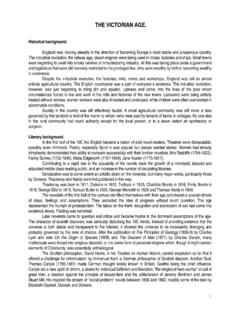Transcription of NCIC Monthly Summary - metoffice.gov.uk
1 November 2021 The averaging period used for the following assessment was 1981-2010. The weather during most of November was on the mild side, with many areas seeing some settled spells, however the last ten days of the month were much colder and more unsettled, with Storm Arwen of note on the 26th/27th. Temperatures were above average for much of the time, and frosts were generally few, especially in northern areas of the UK. The provisional UK mean temperature was C, which is C above the 1981-2010 long-term average. Northern areas were generally warmer relative to average than southern areas, with parts of south-east England actually slightly colder than average.
2 Most parts of the UK saw less rainfall than average, substantially so for some areas, with less than 20% of normal for London and much of southern England. The only area with more rainfall than average was the far north-west of Scotland, and the UK overall had 63% of average November rainfall. Sunshine was below average in northern Scotland, Northern Ireland and western Wales, but rather above average in some other areas, giving an overall figure of 101% of average. The UK Monthly extremes were as follows: A maximum temperature of C was recorded at Nantwich, Reaseheath Hall (Cheshire) on the 9th.
3 A minimum temperature of C was recorded at Shap (Cumbria) on the 29th. In the 24 hours ending at 0900 UTC on the 20th, mm of rain fell at Achfary (Sutherland). A wind gust of 85 knots (98 mph) was recorded at Brizlee Wood (Northumberland) on the night of the 26th. A snow-depth of 18 cm was measured at Middleton, Hillside (Derbyshire) on the 27th. Weather impacts November began unsettled, with reports of localised surface water flooding on the 1st across Merseyside, Lancashire and Greater Manchester. In Northern Ireland there was flooding near Glenavy, County Antrim and in parts of the Ards Peninsula.
4 On the 7th there were some impacts from strong winds reported in Aberdeenshire: the A93, A981 and some minor roads were blocked by fallen trees. No further reports of impacts arose until the last six days of the month. Following the naming of Storm Arwen by the Met Office, including a very rare red wind warning for eastern coastal areas of Scotland and Northern England as these were the areas expected to see the worst, many impacts were experienced on the 26th and 27th. Regrettably, three deaths were reported due to falling trees in Aberdeenshire, Antrim, and Cumbria.
5 In Scotland, Traffic Scotland, the Police and ScotRail took mitigating action ahead of the strongest winds by closing a part of the A1, warning HGV drivers to take an alternative route to the A1 and warning passengers of potential delays on the East Coast Mainline due to speed restrictions. Fallen trees caused widespread disruption on the roads in Scotland, including many A roads, and the snow gates were closed at Braemar and Glenshee. ScotRail reported disruption and cancellations. Some councils temporarily withdrew road services staff due to safety concerns, but with so many roads being blocked by trees they resumed clearing the roads in the early hours.
6 There were numerous high-voltage faults reported and over 120,000 properties were left without power, with 17,000 still without power by month-end. Damage was reported to buildings including Lanark United FC s ground, chimneys and roofs in Dunbar, Eyemouth, and Coldstream. A large area of trees was flattened in a forest near Kinbuck, Stirling. Northern Ireland suffered some delays to rail services, and fallen trees blocked roads. In Wales too, roads and railways were disrupted, with several train services being cancelled on the 27th and delays continuing into the 28th; almost 67,500 customers lost power during the storm.
7 North-west England saw nearly 74,000 properties without power, some for over 2 days. Many trees were brought down which caused disruption to road and rail travel. Cumbria Police declared a major incident because of the power outages and impact on communities. Snow closed Trans-Pennine routes, with 120 HGV drivers stuck on the M62. Speed restrictions were placed on railway lines, numerous roads were blocked due to fallen trees, and there were some reports of damaged buildings. In north-east England nearly 220,000 properties lost their electricity supply, some for over 3 days, with numerous fallen trees and damage to a number of homes.
8 Some holiday caravans were damaged at coastal sites. Many schools were closed either pre-emptively or because of structural damage caused by the storm. South-west England had 78,000 customers without power for some time on the 27th, fallen trees blocked roads, and a person was taken to hospital in the Bristol area after being hit by a falling tree. The last three days of November brought some low-impact ice warnings which hindered ongoing recovery efforts. England diary of highlights Much of the month was on the mild side, but it became much colder towards the end. There was plenty of settled weather, with only limited amounts of rainfall, especially in the south.
9 Only during the last week of the month was the weather truly unsettled, a period which included the first named storm of the season. The mean temperature was provisionally C above the 1981-2010 long-term average, with the north being rather milder but the south-east being near or just below average. Rainfall was broadly below average, especially further south, with many places in the south and south-east having less than a quarter of the average rainfall total for the month; the overall figure for England was 45% of average. Sunshine was above average in the majority of places, with an overall figure of 110%.
10 1st to 6th The south-east was fine and bright for most of the 1st, but showers initially over the south-west spread along the south coast, locally heavy and thundery during the afternoon, and an area of rain over the north moved steadily southwards, becoming more showery. The 2nd began chilly in the south, with fog slow to clear in the midlands ; there was sunshine, but with showers all day over the south-west and developing elsewhere during the afternoon. The 3rd was mainly cloudy, after a bright start in a few areas, with an area of showery precipitation feeding in from the North Sea over eastern counties and into parts of the East midlands and East Anglia, while showers developed for a time elsewhere.




